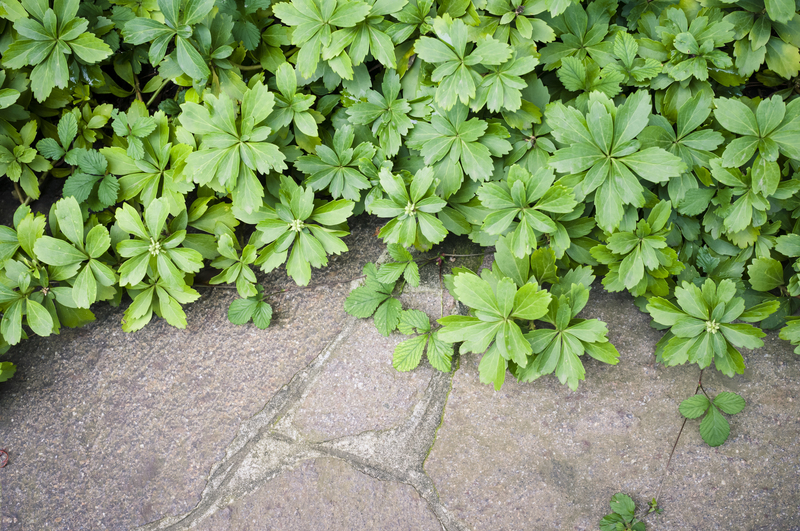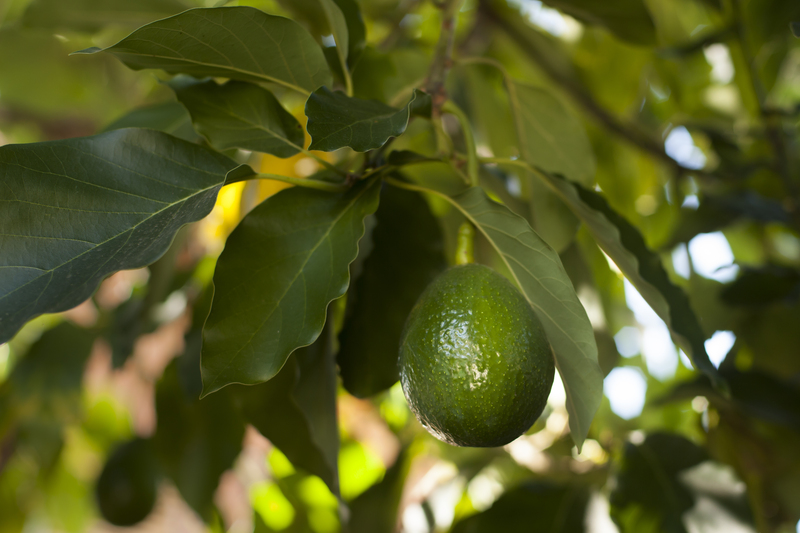Organic Waste: The Gateway to Fertile Landscapes
Posted on 02/07/2025
Organic Waste: The Gateway to Fertile Landscapes
Organic waste stands at the crossroads of two critical modern issues: environmental sustainability and land fertility. With the increasing degradation of soils due to overuse of chemical fertilizers and improper waste management, transforming organic waste into valuable resources emerges as an essential strategy. This comprehensive guide delves deep into the significance of organic waste, its role in enhancing soil fertility, the mechanisms of composting, and how it can become a cornerstone in creating productive, thriving landscapes.
Understanding Organic Waste: Definition & Types
Organic waste encompasses materials of biological origin that are biodegradable and can decompose naturally. Typically generated from households, industries, agriculture, and horticulture, organic waste includes any material derived from living organisms, such as:
- Food scraps - fruit peels, vegetable trimmings, stale bread, coffee grounds, etc.
- Garden and yard waste - grass clippings, leaves, branches, and shrub trimmings
- Agricultural residues - crop stalks, husks, manure
- Paper products - uncoated, non-glossy paper, napkins, cardboard
- Wood waste - untreated sawdust, wood shavings
These organic residues are rich in nutrients that, if managed correctly, can serve as potent soil enhancers, leading to more fertile landscapes with abundant vegetation.

The Science Behind Organic Waste Transformation
Microbial Decomposition: Nature's Recycling Process
When organic waste is returned to the soil, microbes such as bacteria and fungi initiate a natural decomposition process. Through their metabolic activities, these organisms break down complex organic compounds into simpler molecules.
- Nutrient Recycling: Essential nutrients like nitrogen, phosphorus, and potassium are released back into the soil, making them available to plants.
- Humus Formation: The decomposition process leads to the creation of humus, a stable, dark organic matter that improves soil texture and fertility.
Organic waste management thus leverages nature's own mechanisms to rejuvenate soils, especially in agricultural and landscaping applications where sustainable growth is a priority.
Composting: Converting Organic Waste to Black Gold
Composting is the controlled, aerobic decomposition of organic materials. When managed properly, composting transforms organic waste into a nutrient-dense soil amendment, often referred to as "black gold" in gardening and agriculture circles.
The Basic Steps of Composting
- Collection: Gather a mixture of green waste (nitrogen-rich materials like food scraps and grass clippings) and brown waste (carbon-rich materials like dry leaves and cardboard).
- Layering: Alternate layers of greens and browns to create the ideal carbon-to-nitrogen ratio (approximately 30:1).
- Moisture and Aeration: Ensure the pile remains damp but not soaked. Regularly turn the pile to provide oxygen and prevent anaerobic conditions.
- Decomposition: Over weeks to months, microbial activity breaks down the waste, raising the internal temperature and destroying pathogens.
- Maturation: After active decomposition, let the compost mature until it becomes dark, crumbly, and earthy-smelling.
Finished compost not only enriches soil with nutrients but also improves its structure and water-holding capacity, paving the way for lush, healthy landscapes.
Benefits of Organic Waste for Soil Fertility
Enhancing Soil Structure
By integrating organic matter, soil particles clump together to form aggregates. This aggregation improves:
- Soil aeration
- Water infiltration and retention
- Root penetration
Improving Soil Fertility and Microbial Life
Organic residues provide food for beneficial soil organisms, promoting a thriving microbiome responsible for:
- Natural pest suppression
- Efficient nutrient cycling
- Suppression of disease-causing organisms
Reducing Reliance on Chemical Fertilizers
By using organic compost and soil amendments, farmers and landscapers can reduce the need for synthetic inputs. This transition not only lowers environmental impact but also produces healthier food and plant products.
Organic Waste Recycling Methods
Aerobic Composting
Involves oxygen-dependent microbial breakdown, resulting in rapid compost production and less odor. Home composting bins and large-scale municipal operations both use this process.
Vermicomposting
In this method, earthworms digest organic waste, producing highly fertile "worm castings." Vermicompost is valued for its high microbial content and superior nutrient availability.
Anaerobic Digestion
Organic waste is decomposed without oxygen, generating biogas (a form of renewable energy) and digestate, which serves as a soil amendment.
Mulching
Yard trimmings and leaves can be directly applied to the soil surface as mulch, suppressing weeds, conserving moisture, and feeding soil biota as they slowly decompose.
Best Practices for Organic Waste Use in Landscaping
1. Identify Suitable Waste Streams
Not all organic waste is the same. Avoid composting dairy, meat, and oily foods at home to prevent odors and pests; focus on plant-based scraps, eggshells, coffee grounds, and garden debris.
2. Maintain Optimal Balance
Strive for a balance of green (wet, nitrogen-rich) and brown (dry, carbon-rich) materials to ensure efficient decomposition and avoid foul smells or slow breakdown.
3. Ensure Proper Application
- Apply finished compost by mixing it into garden beds or top-dressing lawns.
- Use mulch made from organic waste to retain soil moisture and moderate temperature.
- Periodically amend soils with organic matter to maintain fertility.
4. Monitor Soil Health
Regularly test soil for pH, structure, and nutrient content to tailor organic waste applications to the specific needs of your landscape.
5. Community Engagement and Education
- Participate in local composting programs.
- Encourage neighbors and businesses to separate organic waste at the source.
- Share knowledge about the value of circular organic waste systems.
Organic Waste in Agriculture: Reaping Fertility Benefits
Farms generate and can reuse vast quantities of organic residues. Applying compost, animal manures, and crop by-products improves soil quality, increases yields, and enhances the long-term resilience of agricultural systems. According to research, farms that integrate organic waste recycling see:
- Improved soil moisture retention
- Reduced soil erosion
- Greater biodiversity
- Lower greenhouse gas emissions compared to chemical fertilizers
By closing the loop between production and waste, agriculture can become a sustainable steward of the earth, ensuring fertile landscapes for future generations.
Urban Landscapes and Organic Waste: Greening Our Cities
Urban green spaces can also benefit from the application of composted organic material. Community gardens, tree plantings, and park landscapes thrive when nutrient cycles are restored. Municipal programs that collect food and yard waste for composting return essential nutrients to public spaces, beautifying cities and reducing landfill waste.
The Role of Municipal Composting Programs
Many cities have introduced curbside green waste bins, enabling households to divert organic matter from landfills. Some municipalities offer free or discounted compost to residents, supporting private and public landscaping efforts.
Environmental Impact: Reducing Landfill Burden
When organic waste ends up in landfills, it decomposes anaerobically, producing methane--a potent greenhouse gas. Diverting organic residue to composting not only prevents GHG emissions but also reduces the overall volume of landfill waste, conserving land and reducing environmental contamination.
- 20-30% of municipal solid waste is organic material
- Composting this fraction can significantly reduce landfill methane emissions
Organic waste recycling is thus a critical climate action.
Challenges in Managing Organic Waste
- Lack of infrastructure for collection and processing
- Public misconceptions about composting and odors
- Contamination with non-biodegradable materials (plastics, metals)
Overcoming these barriers requires coordinated efforts by stakeholders--governments, businesses, and community groups--to educate, invest, and innovate.

Innovations and the Future of Organic Waste
Biotechnological Advances
Enzyme-based compost accelerators, programmable composting robots, and smart collection systems are streamlining organic waste recycling.
Circular Economy Models
Urban and rural projects harness organic residues not only for compost, but also for bioplastics, biofuels, and even animal feed--maximizing resource use and minimizing environmental impact.
Conclusion: Organic Waste as the Bedrock of Fertile Landscapes
Organic waste is not merely a byproduct, but a powerful resource at the heart of ecological restoration and agricultural productivity. By recycling organic matter through composting, mulching, and other sustainable methods, we nourish soils, support biodiversity, and create landscapes that can thrive for generations.
The road to vibrant, fertile landscapes begins with recognizing organic waste as the gateway to soil health. Whether in rural farms, urban gardens, or municipal parks, the smart management of organic residues is essential for a sustainable, green future. Let us embrace this "green gold," turning every peel and clippings into the cornerstone of fertile, resilient landscapes globally.
- Start a compost pile in your own backyard or balcony.
- Advocate for organic waste collection in your community.
- Educate others about the many benefits of organic recycling.
Together, we can transform organic waste from a problem into the gateway to rich, fertile landscapes.



